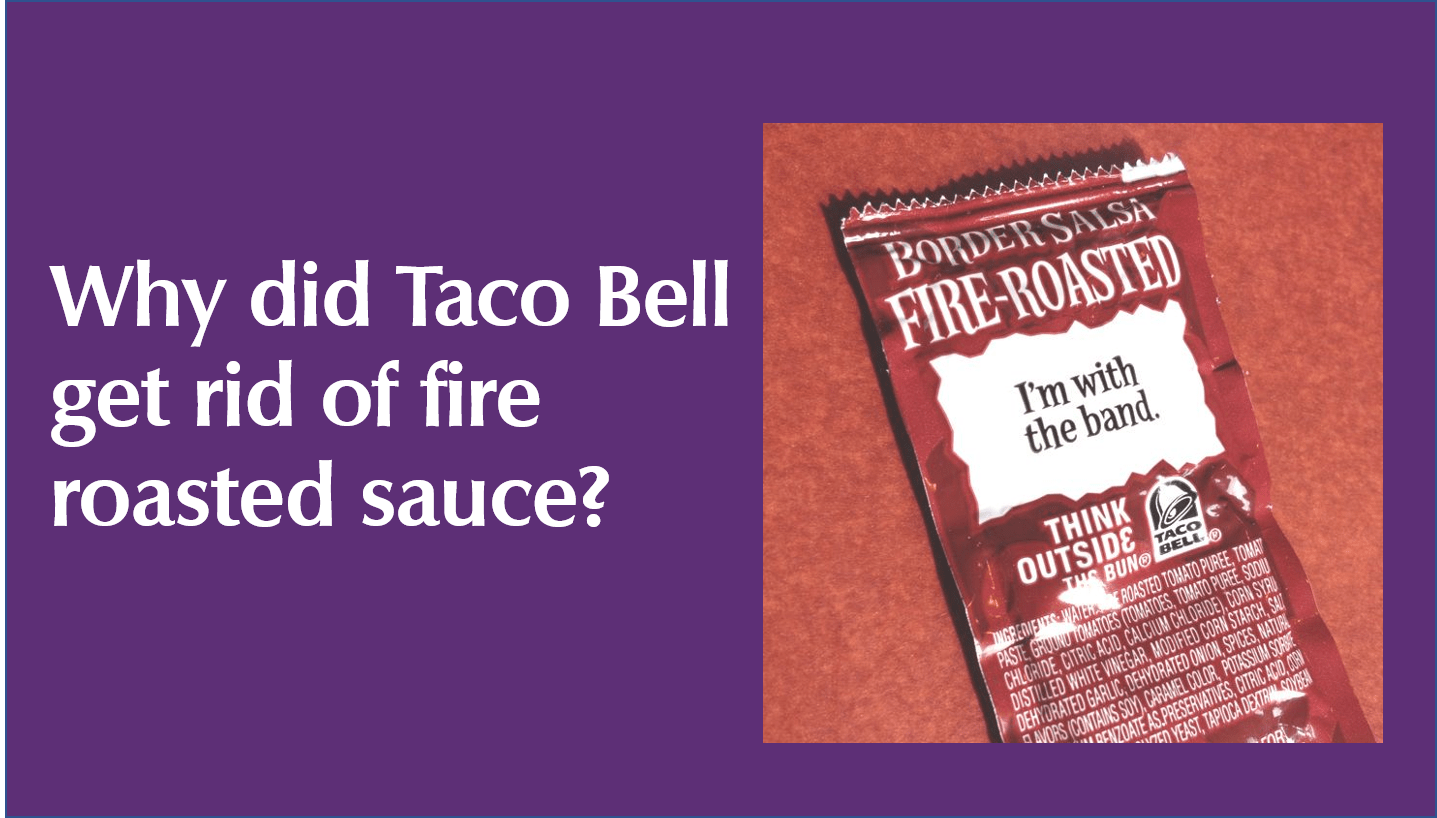Why did Taco Bell get rid of fire-roasted sauce?
Taco Bell, a fast-food haven known for its dynamic menu, has witnessed its fair share of transformations over the years. While some offerings have solidified their status as beloved classics, others have gradually receded into the annals of fast-food nostalgia. Among these, the enigmatic exit of the Fire Roasted Sauce has left fans wondering. Once renowned for its bold flavor and distinctive kick, this condiment has vanished from Taco Bell’s repertoire. In this exploration, we delve into the factors that contributed to the discontinuation of the Fire Roasted Sauce and uncover the dynamics that paved the way for its replacement.

Unpopularity:
Sometimes, even the most audacious of flavors fail to ignite customer enthusiasm. The Fire Roasted Sauce found itself a victim of unpopularity, ultimately contributing to its removal. Despite its potential to tantalize taste buds, the sauce failed to resonate with the Taco Bell community, leading to its departure.
Diverse Offerings:
Taco Bell prides itself on its innovative approach to fast food, constantly aiming to surprise and gratify its patrons. Recognizing the significance of offering diverse choices, Taco Bell introduced the Verde sauce as a replacement for the Fire Roasted Sauce. The Verde sauce brought a fresh spin to the menu, appealing to varying taste preferences and broadening the spectrum of flavor experiences for customers.
Sales and Triumph:
The introduction of the Lava Sauce in 2008 marked a turning point for Taco Bell’s sauce lineup. This new inclusion soared in popularity, quickly becoming one of the chain’s most successful menu items. The Lava Sauce not only delivered more heat than the Fire Roasted sauce but also boasted a higher Scoville rating, making it an instant favorite among spice enthusiasts.
Customer Sentiment and Nostalgia:
Change often triggers nostalgia, and the Fire Roasted Sauce was no exception. While the sauce may have faced criticism during its existence, its departure elicited a sense of yearning among certain customers. The tangy, smoky profile of the Fire Roasted Sauce left a lasting impact on those who enjoyed it, resulting in a desire for its revival.
Regional and Temporal Variability:
As with many decisions in the fast-food domain, the reasoning behind discontinuations can vary. Depending on specific regions and periods, factors such as supply chain alterations, shifting consumer preferences, and evolving culinary trends could influence the decision-making process. It’s essential to acknowledge that while some motives may remain consistent, others might fluctuate due to external influences.
Conclusion:
The departure of Taco Bell’s Fire Roasted Sauce may have left some fans longing for its distinctive flavors, yet it has also paved the way for fresh opportunities in diversity and innovation. As Taco Bell persistently unveils new additions and menu adjustments, it underscores its commitment to maintaining an exciting and dynamic menu. Whether you’re reminiscing about the zesty punch of the Fire Roasted Sauce or embracing the heat of the Lava Sauce, the ever-evolving realm of fast food continues to tantalize our taste buds, keeping us eager to explore the next culinary delight.
Frequently Asked Questions:
Why is there a scarcity of Taco Bell Fire Sauce?
Shortages may arise due to supply chain challenges and heightened demand.
Why did Taco Bell discontinue the Verde sauce?
The discontinuation of the Verde sauce was influenced by menu changes and evolving preferences.
When was Taco Bell Fire Sauce introduced?
Taco Bell Fire Sauce made its debut in 1995.
Is Taco Bell Fire Sauce a type of hot sauce?
Yes, Taco Bell Fire Sauce is classified as a type of hot sauce.
